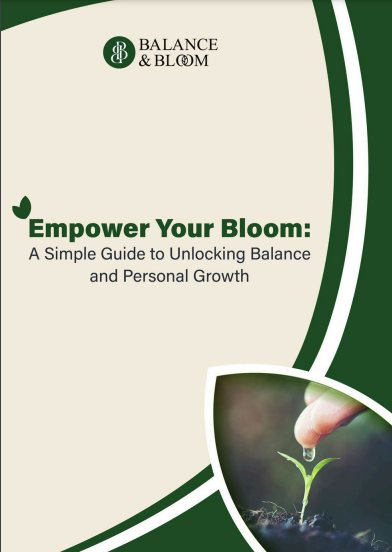The Art of Time Management for Better and healthy Work-Life Balance
We can utilize a variety of time management approaches to better plan our time and boost productivity. These techniques include the following:
- Setting SMART goals.
- Prioritizing tasks according to significance and urgency
- Setting time constraints.
- Take breaks.
- Organizing and eliminating non-essential duties
- Planning
Others include using a calendar to schedule tasks and appointments, the Pomodoro Technique, which breaks work into intervals with a timer, and the Pareto principle, which states that 20% of actions produce 80% of results.
Effective time allocation requires breaking work into small bits and avoiding procrastination. Divide more significant undertakings into smaller jobs to make them more doable. We can overcome overpowering feelings and develop in modest increments using this method. Recognizing procrastination, setting deadlines, embracing imperfection, and rewarding ourselves for completing work might help us avoid it. A good work environment requires locating or creating a setting that helps us focus. These methods help us manage time, boost productivity, reduce stress, and balance work and life.
Boosting Productivity and Efficiency
- Minimize Distractions. To focus and work efficiently, silence notifications, avoid multitasking, and eliminate distractions. Use the Pomodoro Technique (25-minute intervals with brief breaks) to manage time.
- Automate Repetitive Tasks. Investigate tools and integrations that can automate monotonous operations, freeing up your time for more advanced work.
Maximizing chances for professional growth
Continuous learning and development attracts and retains top talent, improves employee engagement and motivation, develops future leaders, boosts employee performance and productivity, increases revenue and market share, enhances customer service and brand loyalty, and fosters innovation and creativity. Learning also fosters lateral thinking and mental flexibility, helping people adjust faster. It also optimizes brain cell function, decreasing cognitive and memory decline with age.
To learn and grow, attend workshops, courses, and industry events. Workshops provide hands-on instruction and skill development. Online or in-person classes deepen understanding. Attending conferences and seminars provides networking opportunities, industry updates, and new ideas. They offer keynotes, panel discussions, and workshops for professional growth.
Professional networking is essential for growth and development. Networking helps professionals share ideas, gain confidence, and gain recognition. It offers professional progression and recruits top organizational and team members.
Personal Care and Fulfillment

- Schedule Personal Time. Schedule time for hobbies, family, and relaxation. Take these appointments as seriously as work.
- Maintain a Healthy Lifestyle. Regular exercise, balanced food, and enough sleep are priorities. Maintaining your physical and mental health enhances your well-being and stress management.
- Pursue Your Passions. Make time for hobbies, interests, and activities that make you happy outside of work. Always remember proper time management is the key to success.
- Disconnect After Work. Keep away from work-related emails and communications after hours. Recharge for the day ahead by disconnecting.
- Vacation Time. Make the most of your holiday! Reserve time for leisure, vacation, or hobbies. A fresh start can enhance creativity and motivation at work.
The Art of Self-Care in Healthy Work-Life Integration
Well-being and productivity require self-care. Reducing stress and anxiety improves happiness, health, productivity, focus, and resilience.
Stress and anxiety are reduced by self-care, improving our lives. Massages, aromatherapy, and breathing exercises alleviate stress. Mental clarity and decision-making improve with self-care. Isolation lets us evaluate our needs and priorities. While self-care may be challenging, there are numerous strategies to help. Start simple and schedule delightful things into our daily routine for self-care.
Being kind and compassionate toward oneself is paramount. We should recognize and meet our needs without shame or selfishness. Friends, family, and experts can help us achieve self-care goals. Sharing and seeking help with self-care goals can help.
Open Communication and setting boundaries
- Discuss Flexibility. Discuss flexible work arrangements with your company if possible. This may include remote work, reduced workweeks, or flexible start/end timings.
- Know Your Rights. Learn corporate regulations and employee rights for breaks, overtime, and time off.
- Address Workload Concerns. Tell your management if you’re overworked. Cooperate on workload modifications, delegation, and resource allocation.
The art of setting Boundaries and Delegation in work-life balance
The balance between work and life requires setting boundaries and communicating well. We communicate our boundaries to others through action or communication. They assist us in determining personal security and health needs and design measures to safeguard them. Setting limits requires good communication. It requires honest, respectful expression of feelings without demands. Self-care is assertively stating our needs and priorities to set appropriate boundaries.
“I” statements might help us set limits by describing our situation and sentiments. We can then communicate our preferred outcome and the benefits of the new circumstance.
Setting limits and communicating well helps us manage time, boost productivity, and balance work and life. We and our organizations benefit from delegation and support. Delegating duties helps us focus on higher-level activities, create trust, increase communication, promote efficiency and productivity, and manage time. Let others handle non-essential duties so we may focus on our strengths. Assigning assignments to the correct people can also boost team performance.
Delegating tasks encourages team members to take on more responsibility and learn new skills at work—team empowerment and professional development result from trusting colleagues to participate in projects.
Here are some alternative ways that you can adopt:

- Limit perfectionism.
It is critical to recognize the distinction between hard work and perfectionism. You are much more likely to be able to perform at your job while also balancing the requirements of your home and family than to attain perfection. Setting unrealistic goals at work can be unproductive and make meeting deadlines harder.
- Leave duties and projects at work.
With technology improvements and employers offering more remote work possibilities, it may become more difficult to detach from work during personal time. For this reason, it is critical to establish and adhere to clear boundaries between work and personal time. For example, don’t check your email after work. Spend more time on family and self-care.
- Evaluate your health.
When you’re physically and emotionally healthy in your personal life, you’re more likely to feel the same way at work. By making easy efforts to boost your well-being, such as eating a nutritious diet, exercising frequently, getting enough sleep, and meditating, you will most likely feel physically and mentally well, which often leads to higher motivation and productivity.
- Engage in personal hobbies.
Many people define themselves based on their jobs, but personal interests and hobbies are just as vital. Consider how you identified yourself before this role at work, and arrange time for things that you enjoy.
For example, if you enjoy reading, set aside time for your favorite novels. If you’ve always enjoyed fishing, set aside time every week to go.
- Spend time with your loved ones.
Making time for the people who matter most to you is one of the best strategies to maintain a healthy work-life balance. Whether it is family, friends, or a combination of the two, it is critical to spend time with people who encourage, support, love, and care about your general well-being. Make it a priority to set aside special time to spend with these folks, and then ensure that time is free of job distractions.
- Assess your particular needs.
A healthy work-life balance is tailored to your needs and preferences. When attempting to create one, conduct a personal inventory of what is most important to you and what makes you happy and fulfilled.
- Enjoy your career.
When you are passionate about your work, you are more likely to be satisfied at work. Having a job you enjoy might also help you feel more driven and complete tasks more efficiently. Consider whether you appreciate your field and job, and if not, what you could do instead. Consider your personal interests, as well as your present transferable abilities and experience, to see how you can transition to a career you’ll enjoy.
Real-life Examples of Work-Life Balance
Exploring Successful Balancers: Oprah Winfrey and Richard Branson
Oprah Winfrey and Richard Branson are two prominent examples of people who have perfected the art of a healthy work-life balance. Despite their rigorous occupations, they prioritize self-care and personal leisure, which benefits their overall success and well-being. They demonstrate the benefits of work-life balance by setting boundaries and effectively managing their time.
Lessons from Leaders
How Elon Musk and Sheryl Sandberg Prioritize Work-Life Balance.
Elon Musk and Sheryl Sandberg, well-known IT industry leaders, emphasize the importance of a healthy work-life balance. They push for flexible work schedules and open communication inside their enterprises in order to promote a balanced lifestyle for themselves and their employees. Their approach highlights how work-life balance improves personal and professional fulfillment.
Navigating Work-Life Balance in Different Professions.
Individuals in various fields, from healthcare professionals to entrepreneurs, are figuring out how to successfully combine work and life. By employing time management tactics, encouraging self-care activities, and cultivating open communication in the workplace, professionals can attain a sense of balance between their professional commitments and personal well-being.



